It’s 05:30 in the morning and a loud “bing!” wakes you. It’s a text message from your colleague. She has come down with the flu and has been up with it all night. And there is simply no way, in 2 and a half hours she is going to be able to stand up in front of 20 people who have flown in from all over the world, for the second day of their strategic planning workshop. Can you please take over?
What do you do?
Well, if humanly possible, you say “Yes!”.
Many facilitators and trainers work independently or in very small groups. As such we are all a little vulnerable at this time of the year (and in general I would say, see my blog post on “Facilitators: To Your Health!“)
So what can you do to help make sure that this emergency hand over goes as smoothly as possible? Here are a few things you can do both in advance to prepare for this possibility and on the day itself:
1) Prepare a Facilitation Agenda, Always
I think this is just good practice, but in situations like these it’s a life saver. We always prepare two versions of the same agenda for any event – a Facilitation Agenda and a Participant Agenda. The participant version has the information that is most important for their participation – the start time, location, break times, session titles, and some details on what will be the focus and task of each session. That is to give confidence that their time will be well spent, the issues covered are the right ones and that if they need to take a call etc, they know when it is safe to do so. It turns out to be one or two pages and easy to read at a glance.
A Facilitation Agenda however will be 3-5 times longer depending on the complexity of your process. It has all that the participant agenda has and much more detail on the dynamic and process of each activity. It includes part of the script or key words you will say to transition from one exercise to another, the materials you will need and what you will do with them for the activities, and all the timings (how long does that speaker have, how long is that group work, etc.) It provides complete process picture and all the decisions made by the facilitator of how that workshop will run.
With that in place, handing it over to another facilitator is much much easier. They might still tweak the agenda to their own style, but at least you can hand over a water tight design for them to follow (not to mention the important fact that the client had a role in developing it, so it matches their expectations and needs already).
2) Cultivate Some Colleagues
Do you have a few facilitators who know what you do and how you do it (and vice versa)? We all have our favourite techniques and methods. Can you take the opportunity in network meetings to share these so that other facilitators are familiar with them too? Or can you write a blog post describing these in detail so that you can refer to that on your hand over?
There might be other facilitators with whom you co-facilitate from time to time, or you have seen them in action and they have seen you. Have a discussion at some point when you are both healthy and see if you want to agree in principle that in case one or the other falls ill or is incapacitated for whatever reason there is willingness to act as stand in if possible.
So those two things are things you can do in advance to help make any last minute handover go more smoothly. Having someone who understands your style, combined with a good facilitation agenda, some forwarded critical correspondence and a short chat from your sick bed, can go a long way to ensuring that your stand in can do a great job. Then what might you do, as either the sick facilitator, or the stand in, on the day itself?
3. Help Prepare Materials for Your Stand In (or Do It Yourself if That’s You)
This might sound odd, but we did this recently and it really worked. Part of the very time consuming set up each morning for a very interactive workshop is preparing all the job aids, flipchart templates, etc. However, for a stand-in facilitator, that precious pre-workshop hour when you should be flying around the workshop room making and putting up those groupwork templates, will probably be spent trying to calm down a nervous workshop host who just went from the comfort of a known quantity to a new facilitator mid-process. So anything that can be done to help get the materials prep time reduced is extremely helpful.
Instead of writing directly on flipcharts which you have to do in situ, smaller cards can be prepared in advance that can be stuck on blank flipcharts with the instructions. Those coloured facilitation cards in different shapes work well, and if you have a self-stick pack then they can just be whacked up on a blank flipchart and help guide the group’s work. If the ill facilitator can manage it and get them dropped off (or picked up) that is great (that’s what we did recently.) If the ill facilitator can’t do this, then you can do this at home, so that when you are at the venue you can have more time to work with the organizer. Do this at least for the first session or two.
Also on materials, if you are the stand-in facilitator, look at the agenda and plan in when you will make the remaining materials. Write into your Facilitation Agenda in the breaks or during quiet times when the group is working on something else, exactly what you will be doing to prepare for the sessions that will follow (e.g. make flipcharts for Session 4, count out cards, cut sticky dots for prioritisation, etc). That way you don’t have to do every thing in advance (because you still have to take a shower, dress properly, eat breakfast and get there in one piece, all looking very calm and in control, in a very short period of time. ) This takes me to the next point…
4) Take Your Own Food
This is important because you will never, ever be able to make the coffee break or lunch. You will be using this time to prepare materials or talk to the organizer, who will no doubt decide that the next session needs to be slightly different (even though perhaps there was a 2 hour conversation with the other facilitator about that session already.) So you need to pack a healthy lunch, some snacks, and a thermos of tea if you can do it.
Along these lines, I also take my own materials, even if I have been told that everything is there. You just never know, a conscientious custodian could have cleared that messy materials table, or a participant took home something to work on over night and then forgot to bring it back. You don’t want to have to spend precious time running around the venue looking for a pair of scissors.
This is indeed flu season; it hit us hard in Europe this year reaching epidemic proportions in Switzerland, and apparently it’s not over yet. And there is no reason why, if it can hit our workshop participants, it can’t also hit us. Think in advance about what might make it easier for someone to replace you, and if there is any possible way, say “yes” to that sick colleague, even at 05:30 in a morning when you were dreaming about finally catching up on your billing and administration that day.
We all know that what goes around comes around – that works for both good deeds, and the flu!








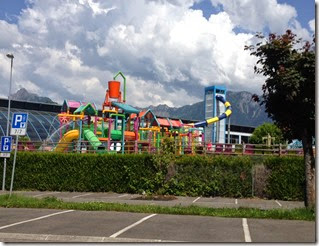
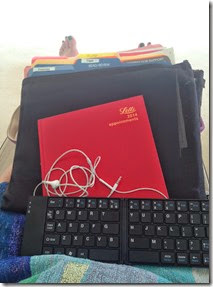
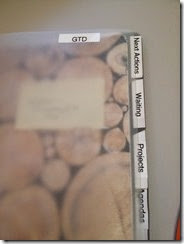
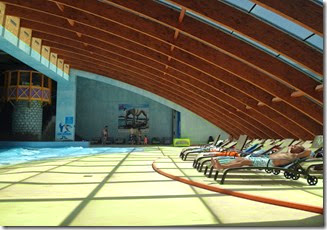
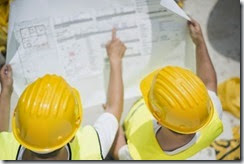



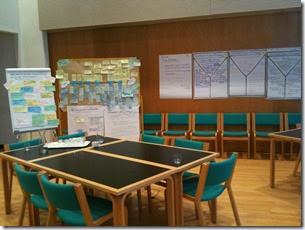
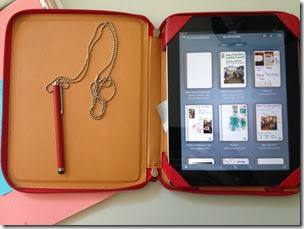
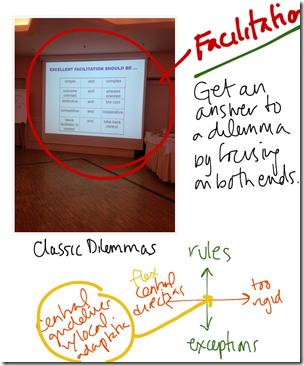
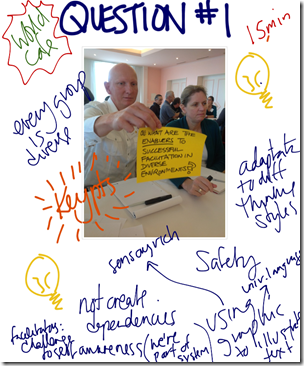

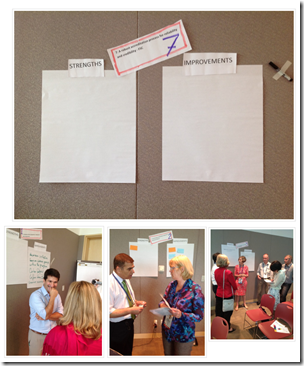



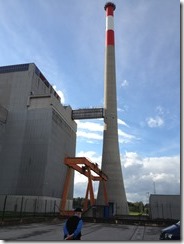
![IMG_9567[1] IMG_9567[1]](https://lh5.ggpht.com/-QsJfZW1wHpE/UjlwM3loxOI/AAAAAAAAAUs/RDLgaI8QrBk/IMG_95671_thumb.jpg?imgmax=800)
![IMG_9569[1] IMG_9569[1]](https://lh5.ggpht.com/-aaPxG-79YQY/UjlwP-r4z7I/AAAAAAAAAU8/ipw-kJSQiPA/IMG_95691_thumb.jpg?imgmax=800)
![IMG_9572[1] IMG_9572[1]](https://lh6.ggpht.com/-OM7FPkWAdN8/UjlwT7zlGMI/AAAAAAAAAVM/FYOiFyhQc8o/IMG_95721_thumb.jpg?imgmax=800)
![IMG_9580[1] IMG_9580[1]](https://lh5.ggpht.com/-B86q5Tde0VA/UjlwXa6OSPI/AAAAAAAAAVc/ZeXNdhb9Dqg/IMG_95801_thumb.jpg?imgmax=800)
![IMG_9588[1] IMG_9588[1]](https://lh3.ggpht.com/-7N1ZRMxrQrI/UjlwbCN1u8I/AAAAAAAAAVo/eFhWk1wFiA0/IMG_95881_thumb.jpg?imgmax=800)
![IMG_9590[1] IMG_9590[1]](https://lh4.ggpht.com/-g7N4m2jxass/UjlweN0eEsI/AAAAAAAAAV8/Yrk_nwIflp0/IMG_95901_thumb.jpg?imgmax=800)
![IMG_9584[1] IMG_9584[1]](https://lh5.ggpht.com/-EyuSPuaTPhY/Ujlwg1vMMoI/AAAAAAAAAWM/Faks-nise84/IMG_95841_thumb.jpg?imgmax=800)
![IMG_9592[1] IMG_9592[1]](https://lh3.ggpht.com/-BHiGqJgZifo/UjlwkRyEzZI/AAAAAAAAAWg/4FFURYhI8K8/IMG_95921_thumb.jpg?imgmax=800)
![IMG_9602[1] IMG_9602[1]](https://lh5.ggpht.com/-jboE_mIOKRM/Ujlwo9Lo-sI/AAAAAAAAAWw/SNVzfKr8wXo/IMG_96021_thumb.jpg?imgmax=800)
![IMG_9608[1] IMG_9608[1]](https://lh6.ggpht.com/-w98L5nC5a9s/Ujlwsl5uyuI/AAAAAAAAAXA/3jzPiZaPlsk/IMG_96081_thumb2.jpg?imgmax=800)
![IMG_9614[1] IMG_9614[1]](https://lh6.ggpht.com/-fp0uY57FH9Y/UjlwwY9vrpI/AAAAAAAAAXQ/TiyeT6_OLMM/IMG_96141_thumb.jpg?imgmax=800)
![IMG_9616[1] IMG_9616[1]](https://lh6.ggpht.com/-CuECNO53rO0/Ujlw07U9hWI/AAAAAAAAAXg/7fBDFJ8RX44/IMG_96161_thumb.jpg?imgmax=800)
![IMG_9621[1] IMG_9621[1]](https://lh4.ggpht.com/-wgR4Og-jsrI/Ujlw5MimuNI/AAAAAAAAAXw/FKTHX2WqFmU/IMG_96211_thumb.jpg?imgmax=800)
![IMG_9624[1] IMG_9624[1]](https://lh4.ggpht.com/-a59ftvsTRdk/Ujlw89ErhMI/AAAAAAAAAYA/jhJGDCooTzY/IMG_96241_thumb.jpg?imgmax=800)
![IMG_9626[1] IMG_9626[1]](https://lh3.ggpht.com/-3oibQtTRv4A/UjlxAhSj32I/AAAAAAAAAYQ/4JvL5-RhfrQ/IMG_96261_thumb.jpg?imgmax=800)
![IMG_9629[1] IMG_9629[1]](https://lh3.ggpht.com/-2eVOTND8gaY/UjlxFt_b_PI/AAAAAAAAAYg/vosd8Wklm1A/IMG_96291_thumb.jpg?imgmax=800)
![IMG_9555[1] IMG_9555[1]](https://lh5.ggpht.com/-kZ28DrCUAxI/UjlxJt1NKxI/AAAAAAAAAYw/9AhNRaN6-cA/IMG_95551_thumb.jpg?imgmax=800)


















